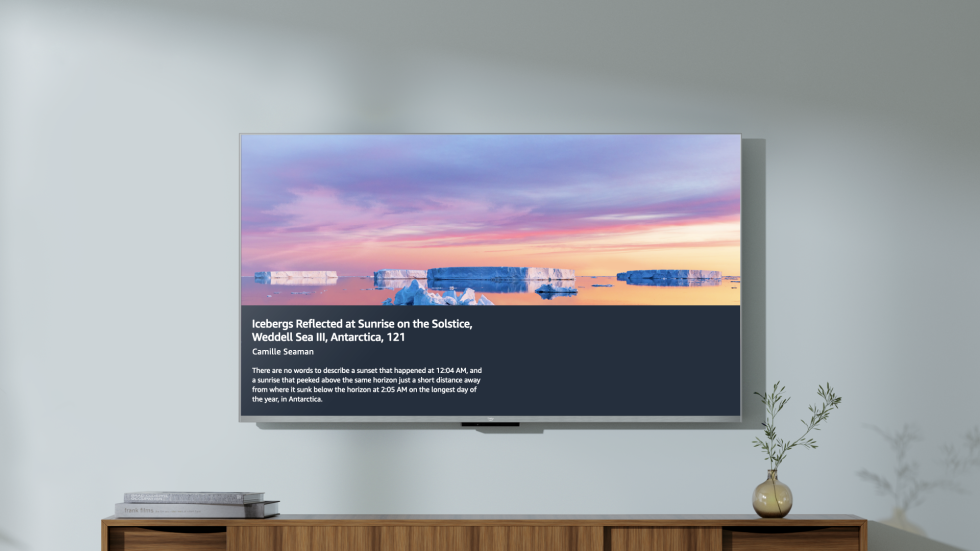Amazon
A year after it started pushing its own TVs, Amazon is expanding its lineup with pricier, more advanced options. The Fire TV Omni QLED Series announced yesterday at the invite-only Amazon hardware event shows the tech giant upping the ante with quantum dot displays and more evolved features for smart homes.
Amazon’s first self-branded TVs came last September, ranging from the more budget-friendly 4-Series, which originally started at $370 for 43 inches, and the Omni Series, which originally cost $1,100 for the largest model, at 75 inches. The 4K TVs aren’t particularly unique. They’re HDR TVs and include HDMI 2.1, with eARC for soundbars, and feature variable refresh rates from a mere 48–60 Hz at 4K. Amazon Alexa is also present, of course. Alexa can work when the TVs are off, enable voice control, and work with Alexa Routines but is not an Amazon-exclusive among modern TVs.
Amazon is paying a little more attention to image quality with the Omni QLED Series; it still avoids specific claims, though, like brightness or color coverage specs. The new 65- and 75-inch TVs use Samsung Display’s QLED technology with quantum dots for a claimed boost in color, plus full-array local dimming to boost contrast.
We won’t know how well local dimming on the Omni QLED TVs work until we see them in person, but they at least include enough dimming zones to be compared against TV’s biggest players, like Samsung. Samsung’s 2022 65-inch QLED TV, the Q80B, has 48 dimming zones, according to reviewer Rtings, while carrying a higher MSRP ($1,200).
Amazon could have squeezed many more dimming zones into the new displays if it opted for a Mini LED backlight. Samsung’s 65-inch QN95B ($2,600 MSRP), for example, reportedly has 720 dimming zones with its Mini LED backlight. And Amazon isn’t yet entering pricier Micro LED or OLED territory.

Amazon also added Dolby Vision IQ support and HDR10+ Adaptive, which uses the TV’s ambient light sensor to adjust brightness based on the lighting in the room. Like Amazon’s prior TVs, the new ones also support the HDR10+ and HLG HDR formats.
Sensors, widgets, and paintings
Amazon’s latest TVs also include features wrapped under an umbrella Amazon’s introducing as Ambient Experience. It starts with presence sensors that can turn on the TV when a person enters the room.
“Instead of a blank screen, the TV uses the power of Alexa to enable you to see helpful information, manage your smart home, listen to or discover new content, and view artwork or family photos,” Amazon’s announcement explained.
It pointed to a 1,500-image catalog of “gallery-quality art” and images offered to users to display on the TVs, albeit not in as artistic a build as Samsung’s The Frame TV.

Amazon
In an educational touch, users can ask Alexa questions about the catalog images or even questions about personal photos, like when the photo was taken.
The new TVs can also display Alexa widgets, like the Calendar, Reminders, and Sticky Notes, and control supported smart home devices, like the Amazon Ring. It’s like having a super-sized Echo Show 15, including audio streaming apps, like Spotify and Apple Podcasts.
Amazon’s announcement claimed you could turn off the TVs’ far-field microphone with a switch, as well as disable other Ambient Experience features, like presence detection.
Amazon’s QLED TVs will start shipping on October 27 at $800 for 65 inches and $1,100 for 75 inches.
Ars Technica may earn compensation for sales from links on this post through affiliate programs.